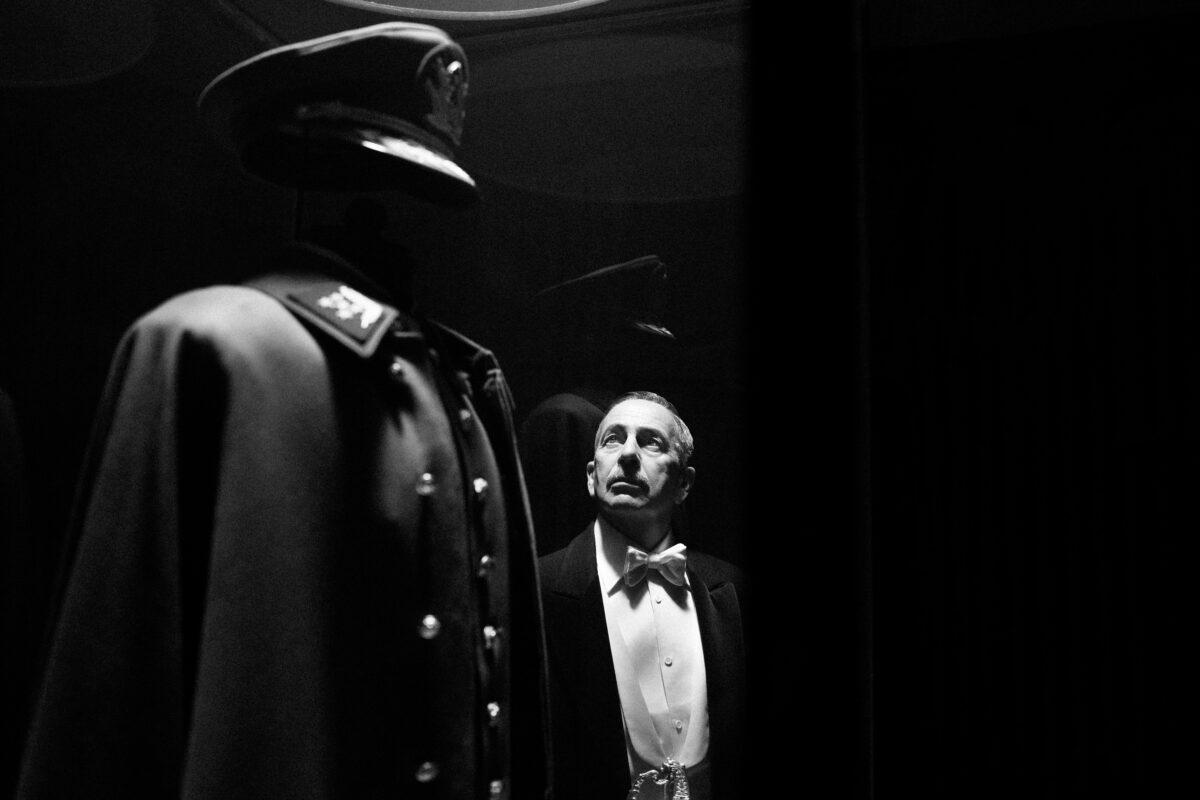
During the final week of production on director Pablo Larraín’s “El Conde” in Patagonia, cinematographer Ed Lachman broke his hip, the result of a bathroom slip and “not doing anything heroic [on set],” the famed cinematographer joked while recalling the fall to IndieWire.
The injury was no joking matter for Lachman, who was devastated he couldn’t shoot his longtime collaborator Todd Haynes’ film, “May December.” And later this month when Haynes and crew premiere that new film at the New York Film Festival, Lachman, a staple at the fest since the early ’70s, also won’t be able to be in Alice Tully Hall cheering them on. But that’s actually this story’s happy ending.
“I’m in Berlin doing tests for Pablo’s new movie,” said Lachman. That’s right, Lachman’s back, prepping Larraín’s new film “Maria,” starring Angelina Jolie as Maria Callas and set to begin production in Budapest later this year. As can be seen with the black comedy satire “El Conde” (now streaming on Netflix, in which infamous Chilean dictator General Pinochet is portrayed as a 250-year-old vampire), the continuation of the Lachman-Larraín collaboration is an exciting new chapter in a long career some worried might end with the injury.
Larraín fought not only for the movie to be in black and white — a vital artistic decision for this timeless (in every sense of the word) history-meets-genre fantasy — but to actually shoot it in black and white, a rarity in the digital age in which studios insist on color cinematography that can later be desaturated in post-production.
“The reason producers do it that way is because then they can always fall back on the color if they have markets that they can’t show it in black and white,” explained Lachman, who argued this is a short-sighted thought process that has a significant impact on the onscreen image. “The contrast and the saturation, the subtlety of mid-range in the blacks and whites, aren’t the same [and] that’s why I think [‘El Conde’] really has a different look than a number of black and white films over the last few years.”

Shooting in black and white allows for the incredible richness and contrast in the mid-range of “El Conde” in part because it permitted Lachman to use the tools and techniques of black and white filmmaking. “When you can actually shoot in monochromatic, you can reach back to black and white filters to modify the contrast and the mid-tones.”
Equally important is how this approach allows all the departments to design for a monochromatic world. The color of costumes, set dressing, and makeup could be chosen based on how each element appears in black and white. A perfect example of this is the creation of the vampire’s life source. “We wanted the blood to have a contrast against other dark things,” said Lachman. “We found in tests that the blood being blue had more luminosity, it had more transparency than red, which usually comes out the deepest black.”
“El Conde” also shares a look, feel, and texture with the great mid-century Hollywood films shot by cinematographers like Gregg Toland and directed by the likes of Orson Welles, in part because Lachman reached for the Ultra Baltar lenses developed in 1938 and used on “Magnificent Ambersons,” “Citizen Kane,” and “Touch of Evil.”
For as much as Lachman went back to the tools and techniques of 80 years ago, there was one piece of equipment that needed to be invented for “El Conde”: a new black and white Arri camera. The German camera manufacturer had black and white sensors for its Alexa XT, but that didn’t meet Netflix’s 4K mandate, while the black and white version of its large format Alexa 65 was simply too big for how Larraín, who is credited as the film’s camera operator, wanted to shoot the film.
“[Pablo] wanted to use a 15-foot technocrane to move around the set and find the camera positions, so we wouldn’t be locked down with a dolly,” said Lachman.
With the camera practically living atop the movable device, the Alexa 65 was too big for “El Conde.” The cinematographer needed Arri to develop a black and white sensor for its smaller large format camera, the ALEXA Mini LF. The problem was less Arri’s willingness to build a new camera — in theory, its color scientists were confident it could work — and more that Lachman’s request came two months before the start of production, which is less time than it had taken to develop previous prototypes. Luckily, according to ARRI’s Marko Massigner and Manfred Jahn, creating the new chip came together quicker than anticipated, and they were able to deliver three working cameras (now available to rent) in time for “El Conde.”

But Larraín’s desire to find his shot working in 360 degrees with the verticality of the crane meant that Lachman wouldn’t be able to mirror the studio lighting of mid-century Hollywood, where characters were specifically staged and lit inside the sets.
“I had to go back to lighting the space, lighting the set through the windows, through overhead ambiance, and that created a certain look,” said Lachman. Initially, the cinematographer worried the lighting scheme was resulting in losing the characters’ eyes, not unlike how Gordon Willis’ intentional use of top light did in the “Godfather.” “I realized that it really was part of the thematics of the story, that these people are hiding from each other and hiding from themselves. So I could let the eyes go dark, and I think that has a certain element of mystery.”















